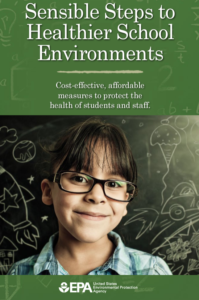Interview with Seth Dibblee
Pest Defense recently interviewed Seth Dibblee, an Environmental Scientist in Integrated Pest Management for the Environmental Protection Agency. We discussed state laws for the six states in his region and the future of school IPM. Read more below or watch the recording here.
What is your role at the EPA and your role with school IPM?
I am an environmental scientist for the EPA pesticide program in Region 5. This region covers the Great Lakes states of Ohio, Minnesota, Michigan, Illinois, Indiana and Wisconsin. I have been with the EPA pesticides program since 2008, starting in agricultural IPM. Then, in 2010 I shifted to the school IPM program to build our programming and resources in this area, which matured in 2016 or. Currently, I am working with two states, Minnesota and Indiana, on their state pesticide regulatory programs, pesticide registration review and special registrations under Section 18 of FIFRA, the pesticide law.
Why did the school IPM program mature in 2016?
Our Strategic Agriculture Initiative was wrapping up in 2010, when the Assistant Administrator Stephen Owes kicked-off the School IPM program as a contributions to children’s health. There were resources for a staff member in each EPA regional office and an allocation for a center of expertise or excellence outside of headquarters. The Center of excellence for IPM was set up in Dallas and is still in existence, working on a national basis.
Beginning in 2011, the EPA began setting up resources for schools to implement IPM. This included on the groundwork with schools and the very first Pest Defense training. Another part of this program was the Stop Schools Pests (now Pest Defense for Healthy Schools) website, created with the help of Dawn Gouge and Janet Hurley. Also in 2011, EPA started a webinar series that continues to present nine to ten webinars each year along with a series of publications available on the web. The EPA supplied policy templates and other tools for schools, which remain current on our website. The largest achievement for the program was the School IPM Roundtable in May 2016. We were able to host many stakeholders from across the country to endorse school IPM as a practice for school health and created a recognition program for successful schools.
Which state in your region has the strongest school IPM laws and what are they? What are the different state requirements?
Every state in Region 5 is different, which has to do with politics, government programs, etc. Two states have school IPM legislation, Illinois and Michigan. The Midwest Pesticide Action Center in Illinois was very instrumental in getting this legislation passed. This legislation requires schools to implement IPM and green cleaning; to have IPM plans on file, which would be the first thing the inspector asks for if a complaint is filed about pesticide use in schools. Illinois also requires IPM training for schools and school districts that do not have IPM plans developed.
Michigan has had a school IPM law for some time, which was more active in the early 2000s. Last year, the Michigan Department of Agriculture and Rural Development got a standing increase in their funding to provide services to revive their programs, especially when related to underserved citizens. This year, as part of their effort to revive the school IPM program, I will be accompanying the new program manager on a walk-through of a Michigan school as a training exercise.
Indiana and Ohio both have specific rules for pesticide use in schools. Pesticides need to be applied by licensed applicators only and when students are not present.
Wisconsin has similar requirements to Indiana and Ohio but allow emergency applications, for example if stinging insects are too close to the building.
Minnesota had a short-term IPM law in schools, which is no longer in effect; School IPM is the stated policy but has no regulatory authority behind it.
What is the future of School IPM?
I think IPM needs to be part of a larger school environmental health program. A facility must have not only IPM, but management strategies for cleaning and other chemicals, ventilation/indoor air quality, lead pipe replacement, removal of PCB-containing materials, and asbestos sealed off to create a healthy learning environment.
Then, the future of IPM needs to be part of the overall sustainability efforts in schools. We need to increase our energy efficiency, conserve water, use only the materials we need, minimize solid waste, and prevent chemical exposures. If a school can take action to improve its sustainability, IPM can always be included, and make a large difference in its environmental health, as well.